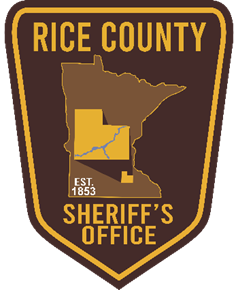 As summer turns into autumn, now is the time to get ready for the chill of winter and go over winter safety information. Use this checklist as a partial list of things to prepare yourself, home and car.
As summer turns into autumn, now is the time to get ready for the chill of winter and go over winter safety information. Use this checklist as a partial list of things to prepare yourself, home and car.
Gas Burning Systems
This becomes an excellent time to have your heating system inspected and routine maintenance completed. During the mild days of autumn, air conditioning units may be turned off. As the cool weather progresses, the chill in the air will cause many to close the house up and turn heating units on. A home owner can increase the efficiency of your heating system with some preventative maintenance.
- All fuel burning devices create carbon monoxide. Gas fueled furnaces and water heaters should be inspected for proper exhausting of combustion gases. Check for obstructions in the exhaust flue, such as bird nests.
- Ask a professional to check the quality of the flame. Incomplete combustion reduces the efficiency of the appliance, costing you more money to operate it.
- Be alert to any smells suggesting a gas leak.
- Replace batteries in set-back thermostats, and verify the set-back program.
- Although most motors today do not require frequent lubrication, check the instruction manual for your particular appliance.
- The purpose of a filter is to keep dust, soot, and other pollutants out of the air that blows into your living area. Dirty filters block airflow which makes your heating system work harder. Replace or clean air filters three times a season or more depending on the size of your house. Check the label on your filter to be sure you’re installing it in the correct direction.
Many of these ideas should be extended to other gas fired devices such as water heaters.
Wood Burning Systems
People enjoy having fireplaces in their homes. They are generally not a primary heat source today, but fireplaces and corn fueled heaters are gaining in popularity. Proper maintenance of the chimney is critical to prevent carbon monoxide poisoning, chimney fires, and premature failure.
- Have a certified chimney sweep inspect and clean the chimney for contaminate build-up, such as creosote.
- During the inspection of a metal chimney inspection should look for dented or rusted metal and missing screws at joints.
- On masonry chimneys, examine the mortar between bricks or stone to make sure it is intact. Look for cracked tile liners or missing bricks.
- Check the flue for obstructions like birds’ nests, and trim any overhanging branches or large trees near the chimney.
- Inspect the chimney cap to prevent water damage, animals from nesting, and debris from blocking the chimney and causing carbon monoxide to flow into the house.
- The damper should fully open to prevent smoke and carbon monoxide building up in the house. When closed, the damper should prevent drafts and heat from escaping when the fireplace is not in use.
- The screen should close completely to avoid hot embers from jumping out of the firebox.
- Keep a nonflammable rug in front of the fireplace so that sparks won’t damage or ignite your flooring if an ember escapes.
Protection Devices
Every home should have several different safety devices to protect the occupants. These include smoke detectors, carbon monoxide detectors, and fire extinguishers.
- Fall is an excellent time to put new batteries in all smoke detectors and CO detectors that use batteries for power or back-up power.
- Look at the age of the detector. Many detectors use a chemical reaction and should be replaced on a regular basis, every five years or less. Check with the manufacturer for recommendations from the manufacturer for your specific unit.
- Check the location of the fire extinguisher to be sure it is easilly accessable. Inspect the device to be sure it is not damaged and has a full charge.
Vehicles
Vehicles are harder to start when it is cold outside. The colder temperature also change some of the characteristics of fluids that keep your car running. A good mechanic will help you ensure your car is ready.
- When it is cold, your vehicle will require more power from the battery to get started. Unfortunately, the battery’s ability to deliver that power is reduced when the battery is cold. Have the capacity of your battery and charging system checked. Some batteries need to have the water level maintained inside. Be sure connections are clean and tight and there is no corrosion around the connectors.
- Dirty oil and oil filters can give you trouble in the winter, so change the oil and filter before the cold weather sets in. Check your owner’s manual to see if it suggests you change the oil with one that is rated for the cold weather. Other filters (fuel, air and transmission) should be checked, too.
- A diagnostic check-up of the engine can be a good pre-winter investment. Faulty wiring, worn spark plugs, a sticking choke or emission control devices that need attention, can all cause problems when starting your car. If you’re due for a tune-up, have it done before winter sets in.
- While it may seem odd to worry about your cooling system in the cold weather, you car can easily overheat in the winter. Start with making sure the antifreeze is in good shape. If it hasn’t been done in a while, consider flushing the cooling system out with a good chemical cleaner and put in fresh antifreeze. Make sure your radiator, belts, and hoses don’t have cracks or leaks, and that the radiator cap, water pump and thermostat are working properly.
- Always ensure your windshield can give you clear vision of the road and traffic around you. Be sure the defroster and windshield wipers are fully operational. Install new winter wiper blades and be sure the washer fluid made for Minnesota winters (one that is rated to -40F should do the trick).
- A defective muffler and tail pipe system can leak carbon monoxide into your vehicle. Leaks into the vehicle shouldn’t happen regardless of season, however, it is particularly important in the winter when the windows of a car are usually closed.
- As the weather gets colder, tire pressure decreases. As the cold weather progresses, make sure your tires are properly inflated to the levels recommended in your owner’s manual. This is a good time to check your tires to make sure they’re not worn, bare or damaged. Worn tires could cause you to lose traction and control of your vehicle in the snow and ice.
- Brakes should operate so there is no pulling to one side. If the brakes on a car are uneven, it may be more likely to skid on icy roads. Mention this to your mechanic if you notice unusual squealing or grinding while braking.
- See and be seen. Make a quick walk around your vehicle to check that all your of lights are working, front and back.
- Update your winter driving emergency kit. Be sure the contents are current and ready to be used.
